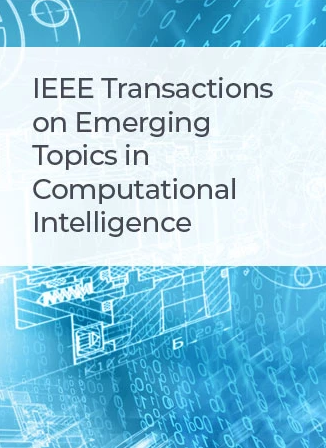用于生成脑 CT 报告的共现关系驱动的层次注意网络
IF 5.3
3区 计算机科学
Q1 COMPUTER SCIENCE, ARTIFICIAL INTELLIGENCE
IEEE Transactions on Emerging Topics in Computational Intelligence
Pub Date : 2024-06-18
DOI:10.1109/TETCI.2024.3413002
引用次数: 0
摘要
自动生成脑计算机断层扫描(CT)成像医疗报告对于帮助放射科医生高效做出更准确的临床诊断至关重要。脑 CT 成像通常包含丰富的病理信息,包括经常在一份报告中同时出现的常见病理和在医疗报告中出现频率较低的罕见病理。然而,目前的研究忽视了常见病理之间潜在的共存性,对罕见病理关注不够,严重限制了生成医疗报告的准确性和多样性。在本文中,我们提出了一种共现关系驱动的分层注意力网络(CRHAN),通过挖掘脑 CT 成像中常见和罕见的病变来改进脑 CT 报告的生成。具体来说,所提出的 CRHAN 遵循一般的编码器-解码器框架,包含两个新颖的注意模块。在编码器中,提出了共现关系引导的语义注意(CRSA)模块,通过将常见病变的共现关系嵌入到语义注意中来提取关键语义特征。在解码器中,提出了共现稀有主题驱动视觉注意力(CRVA)模块,将共现和稀有语义特征融合为句子主题向量,然后引导视觉注意力捕捉重要病变特征,用于生成医疗报告。在脑 CT 数据集上的实验证明了所提方法的有效性。本文章由计算机程序翻译,如有差异,请以英文原文为准。
Co-Occurrence Relationship Driven Hierarchical Attention Network for Brain CT Report Generation
Automatic generation of medical reports for Brain Computed Tomography (CT) imaging is crucial for helping radiologists make more accurate clinical diagnoses efficiently. Brain CT imaging typically contains rich pathological information, including common pathologies that often co-occur in one report and rare pathologies that appear in medical reports with lower frequency. However, current research ignores the potential co-occurrence between common pathologies and pays insufficient attention to rare pathologies, severely restricting the accuracy and diversity of the generated medical reports. In this paper, we propose a Co-occurrence Relationship Driven Hierarchical Attention Network (CRHAN) to improve Brain CT report generation by mining common and rare pathologies in Brain CT imaging. Specifically, the proposed CRHAN follows a general encoder-decoder framework with two novel attention modules. In the encoder, a co-occurrence relationship guided semantic attention (CRSA) module is proposed to extract the critical semantic features by embedding the co-occurrence relationship of common pathologies into semantic attention. In the decoder, a common-rare topic driven visual attention (CRVA) module is proposed to fuse the common and rare semantic features as sentence topic vectors, and then guide the visual attention to capture important lesion features for medical report generation. Experiments on the Brain CT dataset demonstrate the effectiveness of the proposed method.
求助全文
通过发布文献求助,成功后即可免费获取论文全文。
去求助
来源期刊

IEEE Transactions on Emerging Topics in Computational Intelligence
Mathematics-Control and Optimization
CiteScore
10.30
自引率
7.50%
发文量
147
期刊介绍:
The IEEE Transactions on Emerging Topics in Computational Intelligence (TETCI) publishes original articles on emerging aspects of computational intelligence, including theory, applications, and surveys.
TETCI is an electronics only publication. TETCI publishes six issues per year.
Authors are encouraged to submit manuscripts in any emerging topic in computational intelligence, especially nature-inspired computing topics not covered by other IEEE Computational Intelligence Society journals. A few such illustrative examples are glial cell networks, computational neuroscience, Brain Computer Interface, ambient intelligence, non-fuzzy computing with words, artificial life, cultural learning, artificial endocrine networks, social reasoning, artificial hormone networks, computational intelligence for the IoT and Smart-X technologies.
 求助内容:
求助内容: 应助结果提醒方式:
应助结果提醒方式:


